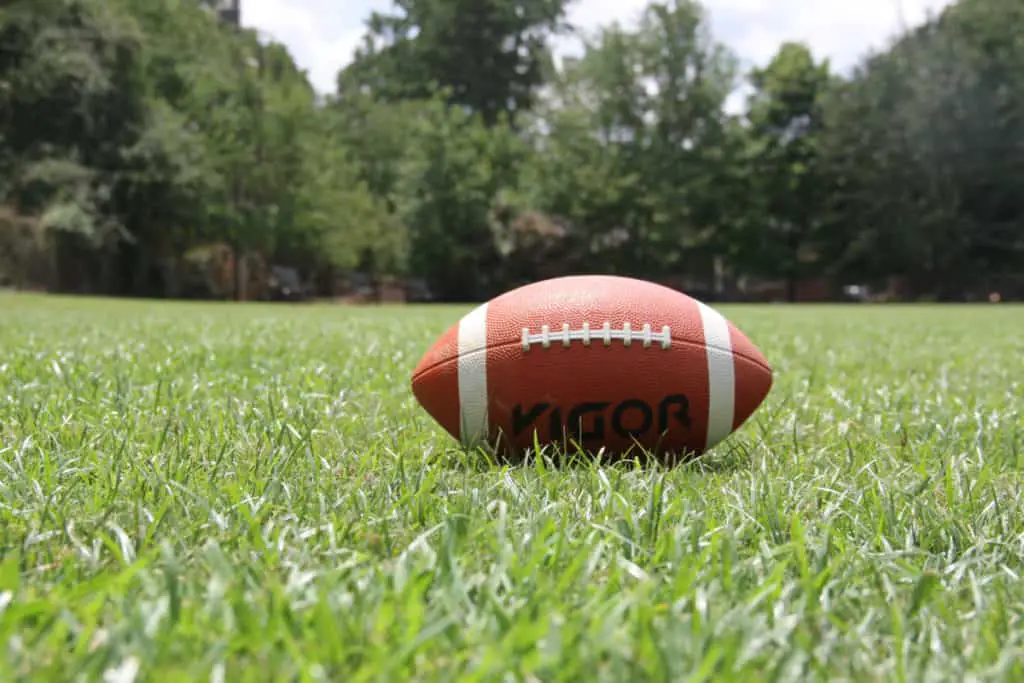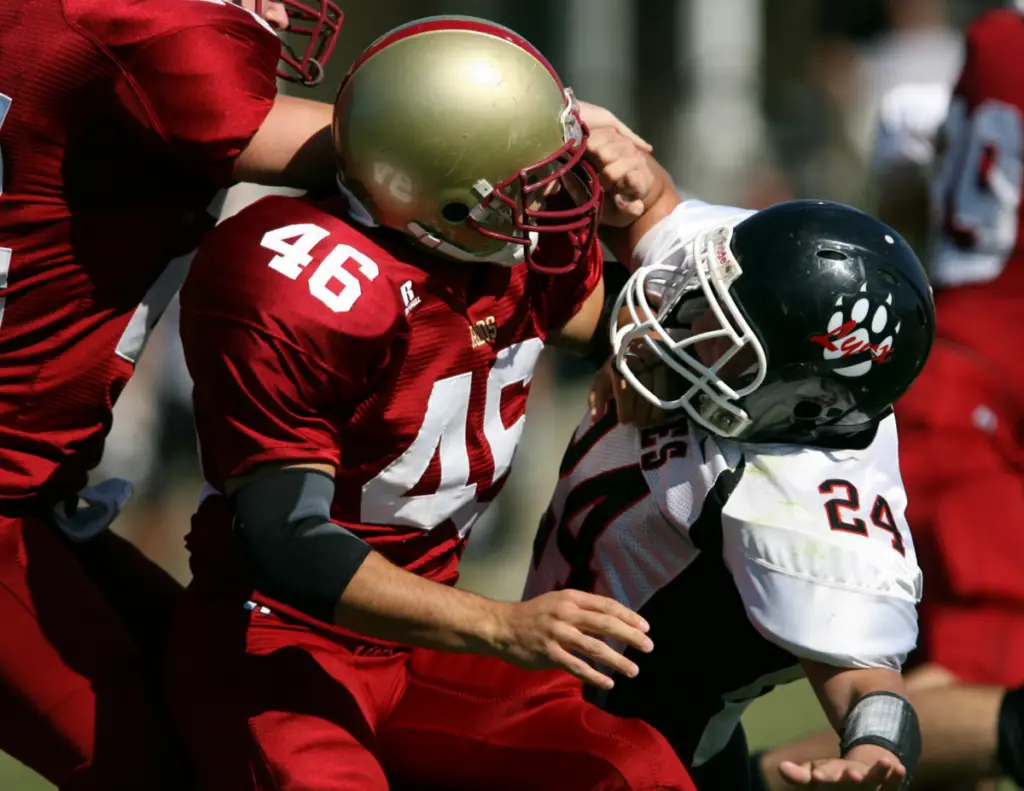Football is a contact sport, a competition that requires a heavy dose of physicality Football is high impact and is injury prone. Having the proper equipment and gear is extremely important to reduce the possibility of injury.
Mouth Guards are an essential part of the equipment that football players use. Do football players at every level wear mouth guards? We will answer this question and many more below.

Why Do Football Players Wear Mouthguards?
Mouthguards are a required part of the equipment for most levels of play. Mouthguards help protect the teeth, the mouth, and the lips. Mouthguards absorb the shock when hit in the head area. There is also research that shows mouthguards can help reduce concussion injuries.
What is the Main Purpose of a Mouthguard?
Mouthguards are necessary for football, considering it is an extremely physical sport. Mouthguards are part of the required equipment from youth football through high school football.
Mouthguards have the main purpose of absorbing shock on contact. Mouthguards protect a players’ teeth, lips, and mouth area.
On contact, it is natural to bite down, as a player might be clenching in anticipation of contact. The mouthguard is a soft piece of equipment, and a players’ teeth then bites down into a cushioned material.
If a player bites down extremely hard during contact, this could cause issues with the head. The jolting that occurs and the extreme act of biting down may cause issues with the head. The biting can send a jolt to the brain, possibly causing a concussion, or other head injury.
What is a Mouthguard Made Out of?
Sports mouthguards are made out of a special materiel called ethylene vinyl acetate, abbreviated as EVA for short.
EVA has been used since the 1980’s and has shown great results over the years. This material is designed to be elastic, non-toxic, and has the ability to absorb and reduce transmitted impact forces suffered by athletes in contact sports.
There are three factors that are desired when designing a mouthguard, and EVA seems to satisfy these factors:
- The energy absorption of the material
- The resistance of deformation
- Comfort for the wearer
How to Form a Mouthguard to Fit Properly
Some people may think that you get a mouthguard and it works right away. This is not the case as it does take some work to get the proper fit. The steps to forming a mouthguard are below:
1 – Boil 2 cups of water
2 – Place mouthguard in boiling water for 30 seconds
3 – Place mouthguard in a cup of cold water for 10 seconds
4 – Place mouthguard in mouth
5 – Bite down firmly onto the mouthguard
6 – Put tongue to edge of mouthguard and suck air out
7 – Hold for 30 seconds
This technique allows for the mouthguard to conform to the mouth and teeth structure of the individual. This allows for comfort and also protection. The fit of the mouthguard is important for player safety.
For a great instructional video on molding mouthguards, check out this video:
How to Mold a Mouthpiece (Stovetop/Microwave)
What Color are Mouthguards?
Mouthguards come in many different colors and designs. Custom mouthguards are also becoming popular, where players can design their own mouthguards.
One rule that is common in most states is that players have to have some color. Mouthguards can not be clear, mostly so that referees can see if players have the mouthguard in.
Many players attempt to match their mouthguards with the colors of their uniforms.
Why Do Some Mouthguards Look Like Pacifiers?
This type of mouthguard that looks like a pacifier is actually called a lip guard or lip protector. These types of mouthguards do actually have a purpose as to protect a players mouth and lips.
In football, fingers do end up inside face masks, and lip protectors do help protect against this.
These mouthguards that also have lip protectors look cool. Players use them as a way to decorate their equipment and their look. These lip protectors come in many different designs and many NFL players have trademark designs.
Is it a Penalty to Not have a Mouthguard in?
This rule actually is different for each level of play. Youth and high school typically have similar infractions, whereas college and the NFL have different rules on this as well.
Youth and High School
Youth and high school football actually will assess a penalty of the mouthguard is not in a players mouth. The penalty ranges from 5-10 yards depending on the state and also the youth rules that are established.
College Football
In college football, teams are charged a timeout if a mouthguard is not in a player’s mouth. If the team is out of timeouts, a five-yard penalty is assessed. This rule actually doesn’t seem to come into play very often at the college level.
NFL
In the NFL, there is no rule or infraction for not wearing a mouthguard. The NFL recommends that players wear mouthguards, but many players do not wear one.
Quarterbacks in the NFL rarely wear a mouthguard, mostly because they are calling out plays and communicating with teammates right before the snap. Running backs, linebackers, and linemen are the most common positions that wear mouthguards. These positions do require a lot of contact, so protecting one’s mouth is a necessity.

Final Thoughts
Mouthguards are used in all levels of play. At the youth and high school levels, mouthguards are mandatory and an infraction is assessed if mouthguards are not worn. In the NFL, mouthguards are not required.
Mouthguards come in all shapes, sizes, and designs. Forming a mouthguard to fit a players mouth structure correctly is important for both safety and comfort.
The design and technology of mouthguards has evolved over the years. The material is softer and more comfortable for players.
Mouthguards usually come with a string attached so that the player can attach it to the face mask of the helmet. This helps to keep track of the mouth guard during practice or competition.
Helpful Resources on other football gear:
